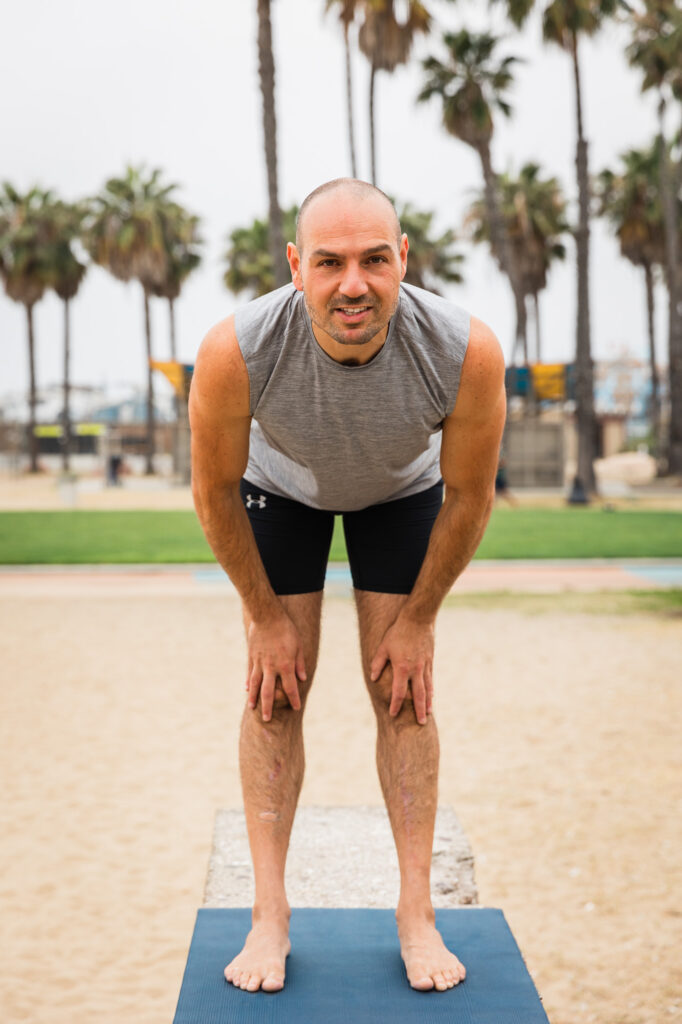How to Prevent Neck Strains From Pull Ups

Do you get neck pain or strain your neck from pullups? Well this blog post will help you get over that! The progression exercises I’m going to share with you are going to help you to make neck strains a thing of the past because they are going to increase the strength of your traps and neck muscles AND activate them properly before pullups to result in less neck strain overall.
Over the years I’ve noticed there’s 4 main reasons why people strain their neck during pullups:
- Those small neck, trap and scapular muscles aren’t strong enough. When they are asked to perform beyond their capacity, they experience partial tears and take a few days to heal. (Solution: They need to be strengthened.)
- Those same muscles are dormant and aren’t engaged properly before the start of the workout. (Solution: Activate them with a proper warm up.)
- Improper movement patterns and lack of scapular control put these smaller muscles into disadvantaged positions. (Solution: When performing pullups, focus on proper form by pulling the shoulders down, away from the ears, before bending the elbows to pullup.)
- Not enough rest in between sets.
So to sum up, we need to strengthen these muscles (preferably daily), warm-up or activate them properly before working out and make sure we are initiating our pullups properly. The good news is I know the perfect exercises that tackle all of these issues simultaneously for you. So here goes!
1. Perform Shoulder Roll Progressions DAILY and as part of your warm up
Shoulder Rolls will increase your awareness of how to manipulate your shoulder blades and are an excellent mobility drill that will simultaneously strengthen, increase stability and loosen up the musculature around the upper back and neck which make for a fantastic warm up as well. Watch the video below to get a primer on how to do them properly and their progressions.
The Nitty Gritty Scrumptious Shoulder Roll Progressions:
- Shoulder rolls while standing/sitting
- Shoulder rolls in incline plank
- Shoulder rolls on hands & knees
- Shoulder rolls in plank
- Shoulder rolls in downward facing dog (your goal!)
- Shoulder rolls in handstand (Advanced)
You should start with the first one and work your way toward executing them perfectly in downward dog with straight arms the entire time, in both directions. Doing them in that shape feels absolutely wonderful and almost feels like you’re massaging your own upper back. For more info about this exercise, including more advanced versions, read my detailed blog post on Shoulder Roll Progressions here.
2. Perform Hanging Shoulder Rolls DAILY and as part of your warm up
Hanging Shoulder Rolls (aka Circular Scapular Pulls) are basically the same thing as the shoulder rolls you practiced above, however, you are now doing them while hanging from a bar. This puts the force-vectors in the opposite direction and strengthens more scapular muscles (you have 17 muscles that connect to your shoulder blades!), while again, increasing scapular control.
First Progression: Hanging Scapular Pulls
These are fairly simple and a good stepping stone before you do the Hanging Shoulder Rolls. All you do is hang from a bar and pull your shoulders down as far as you can. Then relax them and let them ride up to cover your ears. And repeat. Strive to ensure your elbows never bend during any of these exercises.
Final Boss: Hanging Shoulder Rolls
After you’re comfortable with simply doing scapular pulls (shoulders up and down with straight arms), work on trying to move the shoulders in a circular fashion. Let the shoulders shrug up, pinch them back together, pull them down, push them forward and let the shoulders ride up again. You’re basically making as big of a circle as you can. In the video below I start off by showing how it’s done in a very robotic manner and then get smoother and smoother.
The great news is that these same exact exercises that you implement as part of your daily routine, double as the perfect warm-up before your workout, so utilize them before your workout.
3. Make sure you’re performing pullups correctly.
When you’re hanging from the bar, focus on proper form by pulling the shoulders down, away from the ears, before bending the elbows to go up. This simple motion (de-shrugging the shoulders) engages the lats which are the giant muscles of your upper back. If you do not engage the lats, the smaller muscles like your traps and biceps take over and won’t do a great job, and this is how people strain themselves. Take a video of yourself from the back to ensure you’re doing this correctly. This video tutorial will help you out:
4. Understand the importance of allowing your muscles to REST and RECOVER
If you just did a bunch of shoulder rolls/pulls to failure, don’t jump straight into pullups. If you do, you’re just asking for a neck strain. You need to respect the fact that these smaller muscles need to recover to be ready for harder work. The muscles being worked are what help to keep your shoulder in place properly so you can biomechanically perform things correctly.
And finally, always stop one or two reps shy of form failure. You should very seldomly push yourself to absolute failure. The risk to reward isn’t worth it. It’s far better to stop before grinding out that one last sloppy rep, rest a couple minutes, and then do more if you choose to.
In conclusion…
Master these shoulder rolls in downward dog, master the hanging shoulder rolls, make sure you’re pulling your shoulders down, away from the ears before initiating a pullup and resting appropriately between your sets and you’re going to be well on your way to making neck strains a thing of the past!






